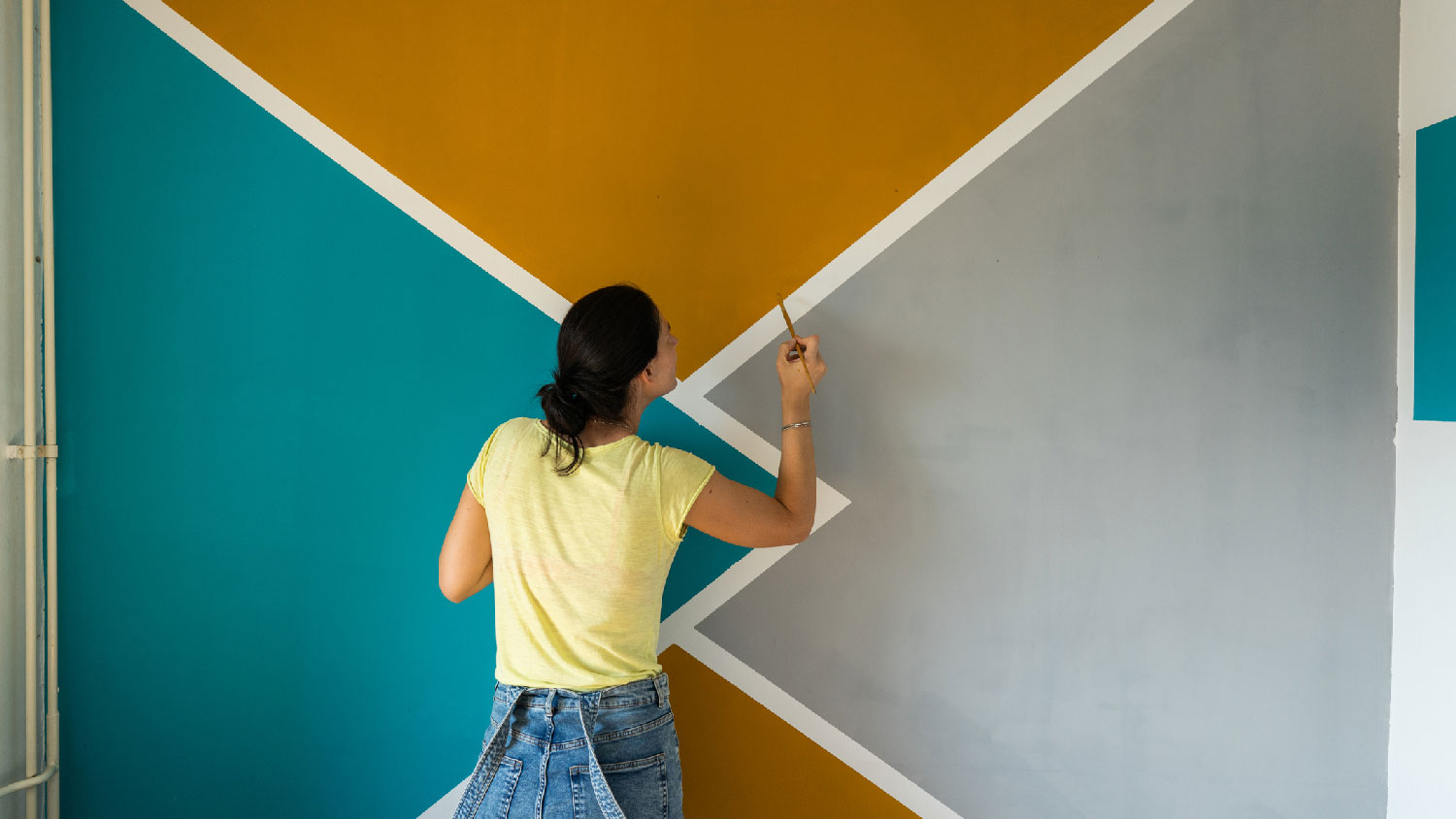
The cost to paint the interior of a house in Chicago, IL depends on size, layout, type of surface, and more. Learn what factors can influence your total in this guide.
Accentuate the positive in any room


Accent walls can elevate the style and change the feel of any room.
Choosing an accent wall depends on factors like lighting, size, and furniture placement.
Large, symmetrical walls across from room entrances make good choices for accent walls.
Accent walls are a great way to highlight any space and elevate the style of your home. Deciding which wall to use as an accent wall can be tricky, though. Everything from the layout of the room to how the light hits your home can make a big difference in the visual impact an accent wall can make. Here are a few things to consider when you’re trying to choose an accent wall.
Accent walls are popular design features that offer an alternative to the traditional look of a one-color room. With an accent wall, one wall is visually different from the others. You can achieve this look by using a different color paint, using a textured wall painting technique, covering the wall in a different material like wood slats or brick façade, or creating an accent wall with wallpaper. No matter where your creative instinct leads you, there is an accent wall idea to help you achieve the look you want.

Placement is critical when deciding which wall to use as an accent wall. Accent walls are often the first place your eye goes, which makes the wall opposite a room’s entrance a good choice. This also works for your home’s entrance—an accent wall in direct view of the front door will be automatically eye-catching.
Architectural features like fireplaces, nooks, or built-in shelving naturally draw the eye, so walls that contain these features make great choices for accent walls. Conversely, you may want to avoid highlighting some features like asymmetrical walls or windows, closet doors, sloped ceilings, or electrical panels.
Where and how your room gets light can play a big role in choosing an accent wall. Walls that don’t receive much light may not be the best option for accent walls, as darker areas don’t catch the eye the same way lighter ones do. A textured accent wall will benefit from direct light that highlights the texture, while a painted accent wall can be used to brighten or darken part of the room, depending on how the light hits it.

When it comes to accent walls, bigger might be better. Accentuating a wall smaller than the surrounding walls can make your room seem smaller overall, but making a larger wall an accent wall opens up the space and adds a sense of grandeur to the room. If your room has relatively evenly sized walls, size doesn’t matter as much, so choose the wall that works best based on other factors.
If you select a very large or tall wall as your accent wall, hiring a local wall mural painter or interior painter might be worth it. They have the equipment and supplies to get perfect coverage in every corner and will save you having to carry painting supplies up and down a ladder.
There’s no sense in spending the time and cost to paint an accent wall to then turn around and cover it up with large pieces of furniture. Consider how your room is arranged, where your furniture sits, and how large the pieces are when choosing an accent wall. While you certainly don’t need to keep an accent wall completely empty, try not to pick a wall that’s mostly hidden by furniture.
From average costs to expert advice, get all the answers you need to get your job done.

The cost to paint the interior of a house in Chicago, IL depends on size, layout, type of surface, and more. Learn what factors can influence your total in this guide.

The cost to paint the interior of a house in Indianapolis, IN depends on size, layout, type of surface, and more. Learn what factors can influence your total in this guide.

The cost to paint the interior of a house in Seattle, WA depends on size, layout, type of surface, and more. Learn what factors can influence your total in this guide.

Wondering how much you should pay a painter upfront? Check out this guide to learn when and how much you can expect to pay house painters for services.

Alternatives to paint thinner offer a non-toxic way of thinning your paint and cleaning up your painting tools. Learn more about your options.

Are you asking yourself, “What is limewash paint?” Learn more about this timeless paint, sometimes called whitewash, before using it in your next project.